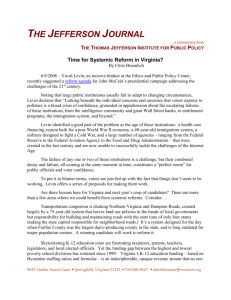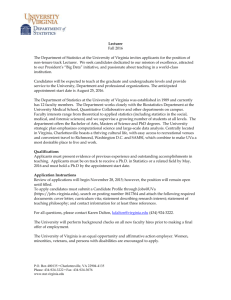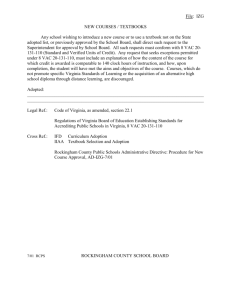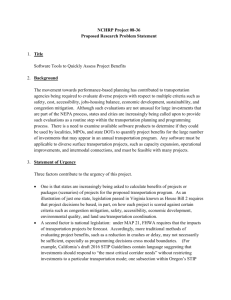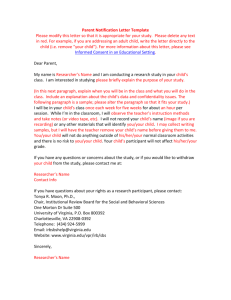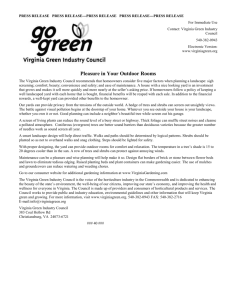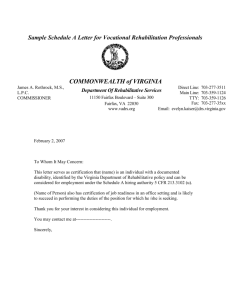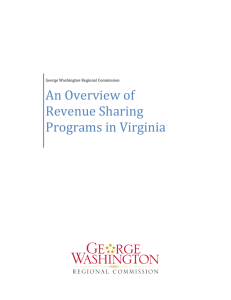CNB_PostElection - Thomas Jefferson Institute for Public Policy
advertisement
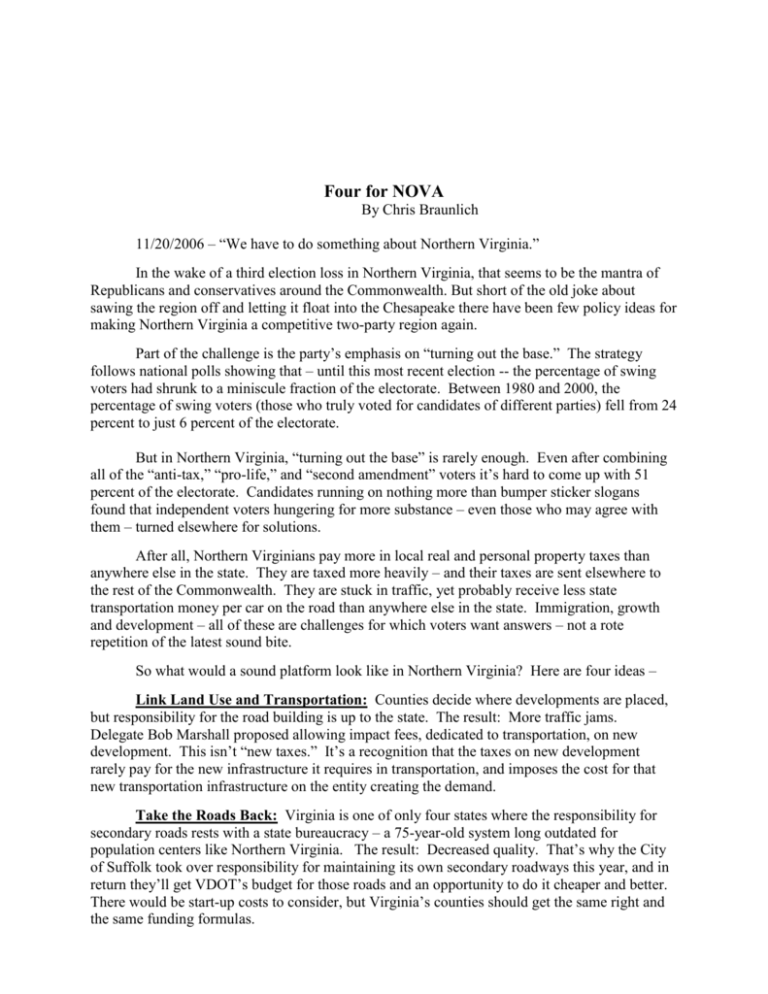
Four for NOVA By Chris Braunlich 11/20/2006 – “We have to do something about Northern Virginia.” In the wake of a third election loss in Northern Virginia, that seems to be the mantra of Republicans and conservatives around the Commonwealth. But short of the old joke about sawing the region off and letting it float into the Chesapeake there have been few policy ideas for making Northern Virginia a competitive two-party region again. Part of the challenge is the party’s emphasis on “turning out the base.” The strategy follows national polls showing that – until this most recent election -- the percentage of swing voters had shrunk to a miniscule fraction of the electorate. Between 1980 and 2000, the percentage of swing voters (those who truly voted for candidates of different parties) fell from 24 percent to just 6 percent of the electorate. But in Northern Virginia, “turning out the base” is rarely enough. Even after combining all of the “anti-tax,” “pro-life,” and “second amendment” voters it’s hard to come up with 51 percent of the electorate. Candidates running on nothing more than bumper sticker slogans found that independent voters hungering for more substance – even those who may agree with them – turned elsewhere for solutions. After all, Northern Virginians pay more in local real and personal property taxes than anywhere else in the state. They are taxed more heavily – and their taxes are sent elsewhere to the rest of the Commonwealth. They are stuck in traffic, yet probably receive less state transportation money per car on the road than anywhere else in the state. Immigration, growth and development – all of these are challenges for which voters want answers – not a rote repetition of the latest sound bite. So what would a sound platform look like in Northern Virginia? Here are four ideas – Link Land Use and Transportation: Counties decide where developments are placed, but responsibility for the road building is up to the state. The result: More traffic jams. Delegate Bob Marshall proposed allowing impact fees, dedicated to transportation, on new development. This isn’t “new taxes.” It’s a recognition that the taxes on new development rarely pay for the new infrastructure it requires in transportation, and imposes the cost for that new transportation infrastructure on the entity creating the demand. Take the Roads Back: Virginia is one of only four states where the responsibility for secondary roads rests with a state bureaucracy – a 75-year-old system long outdated for population centers like Northern Virginia. The result: Decreased quality. That’s why the City of Suffolk took over responsibility for maintaining its own secondary roadways this year, and in return they’ll get VDOT’s budget for those roads and an opportunity to do it cheaper and better. There would be start-up costs to consider, but Virginia’s counties should get the same right and the same funding formulas. Stop Giving Away Money: Everyone knows Northern Virginia is the economic powerhouse that funds the state. Not everyone knows how other localities use that money. Answer: To cut their own budgets. When the General Assembly raised the sales tax in 2004, half the funds were sent back to localities for education purposes. But legislators changed the formula in 2004, so that Northern Virginia received even less than they would have under the old formula. Fairfax County taxpayers, for example, paid in nearly $70 million in new taxes. Under the old formula, they would have received $53 million back. Under the revised formula, they got back only $32 million. Adding insult to injury, 40 percent of state localities used the extra money they received from NOVA taxpayers to cut their own per pupil support. It’s not the first time that’s happened, which is why legislators started insisting on a “Maintenance of Effort” clause a few years ago to prevent localities from doing that. There was no such insistence this time. There should be. End the NOVA Tax: Gubernatorial candidate Jim Gilmore was smart when he proposed to “end the car tax.” Not only does it affect everyone; not only is it the most painful tax to pay (all at once); but it affects Northern Virginians more than most and gave him an issue to ride hard in building a GOP majority. The “fix” was to have state government reimburse local governments for part of the tax car owners paid. But when the reimbursement reached 70 percent of the bill, the General Assembly “froze” the state’s reimbursement. Except they didn’t freeze it at 70 percent – they froze it at whatever dollars each locality was receiving at the time. That means that, two years later, growth areas like Prince William, Fairfax and Loudoun Counties have the same amount of money, but spread it out over more cars. The more cars that come in (and the more those cars cost), the less relief taxpayers see. At the very least, the General Assembly should “unfreeze” the dollars and keep the “real cap” at 70% – and stop penalizing economic growth in Northern Virginia. Northern Virginians may be the “wealthy cousins” in Virginia, but that doesn’t mean they don’t feel it when gas prices go up, the housing market goes down, taxes go up, and transportation grinds to a standstill. A platform for Northern Virginia doesn’t have to be “liberal.” But it does have to offer more than just platitudes, and it does have to address the challenges that touch voters every day of their lives. Chris Braunlich is a former member of the Fairfax County School Board, and vice president of the Thomas Jefferson Institute for Public Policy. The views expressed here are his own and do not necessary reflect the opinions of the Institute or its Board of Directors. He may be reached at c.Braunlich@att.net.
